1. 引言
在本教程中,我们将学习如何将常见的编程结构在流程图中进行表示,从而掌握如何将算法映射为流程图,以及反向映射的方法。
我们会先理解为何在使用具体编程语言实现算法之前,需要使用伪代码和流程图进行设计。接着,我们会分析伪代码结构与流程图元素之间的对应关系,并通过实际案例加深理解。最后,我们会对伪代码与流程图做一个系统性的总结对比。
2. 算法设计
随着程序复杂度的不断提升,各种编程范式、语言和库应运而生,以应对这种复杂性。在这种背景下,设计工具的使用变得尤为重要。
设计工具帮助我们在实现前抽象逻辑结构,从而提高代码质量、降低维护成本。这些工具包括:
✅ 文本类:如伪代码(Pseudocode)、程序设计语言(PDL)
✅ 图形类:如流程图(Flowchart)
它们不依赖具体编程语言,但逻辑结构与之兼容。
2.1 文本设计工具
文本设计工具的核心思想是简化编程语言的语法,使其更接近自然语言,从而更容易表达算法逻辑。
伪代码(Pseudocode) 是最广为人知的文本设计工具之一。它使用更简单的语法来描述编程结构,例如变量赋值、循环、条件判断等,便于理解和沟通。
程序设计语言(PDL) 与伪代码类似,但更偏向结构化英文表达,不绑定任何具体编程语言。
两者都可以用于算法设计,但伪代码更适合熟悉编程语言的开发者,而 PDL 更适合初学者或跨语言团队。
2.2 图形设计工具
图形设计工具通过图形元素来表示算法逻辑,避免了语言歧义,视觉上更直观。
流程图(Flowchart) 是最广泛使用的图形设计工具之一。它能清晰地表示程序的流程、条件判断、循环、数据流向等。
流程图的设计遵循 ISO 5807 标准,确保图形元素的统一性和可读性。该标准定义了各种图形符号的使用方式和命名规范。
3. 流程图元素与伪代码结构的对应关系
伪代码中的结构在流程图中通常都有对应的图形元素。即使没有直接对应项,也能通过组合图形来表达相同逻辑。
下面列出主要的流程图元素及其在伪代码中的对应结构:
3.1 起止符(Terminator)
每个流程图必须有且仅有一个开始和一个结束点,用椭圆表示。
✅ 示例图形: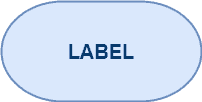
对应伪代码:函数或程序的起始与结束部分。
3.2 手动输入(Manual Input)
表示用户手动输入数据的操作,如键盘输入、扫码枪等。
✅ 示例图形: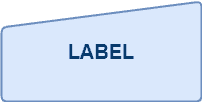
对应伪代码:input()、scanf()、cin 等输入操作。
3.3 处理(Process)
表示对数据的处理操作,如赋值、计算等。
✅ 示例图形: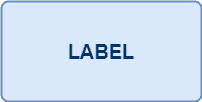
对应伪代码:变量赋值、算术运算、逻辑运算等。
3.4 显示(Display)
表示输出操作,如打印结果到屏幕。
✅ 示例图形:
对应伪代码:print()、System.out.println() 等输出语句。
3.5 判断(Decision)
表示条件判断,有多个出口,根据条件选择执行路径。
✅ 示例图形: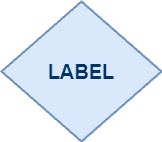
对应伪代码:if、if-else、switch-case 等条件语句。
3.6 预定义过程(Predefined Process)
表示一个已定义好的子程序或函数调用。
✅ 示例图形: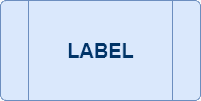
对应伪代码:函数调用、子程序调用。
3.7 连接符(Connector)
用于连接流程图的不同部分,使流程图结构更清晰。
✅ 示例图形: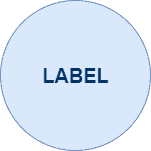
常见于 if-else 后的流程合并点。
3.8 线条(Line)
表示流程图中各元素之间的执行顺序,箭头方向表示流程方向。
✅ 示例图形: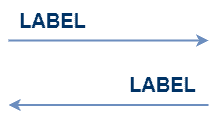
对应伪代码:程序执行顺序,无需特别表示。
3.9 其他元素
流程图还包括一些较少使用但同样重要的元素,如:
- 准备(Preparation):表示初始化操作
- 延迟(Delay):表示等待操作
- 注释(Comment):用于添加说明
这些元素也都在 ISO 5807 中有明确定义。
4. 伪代码 → 流程图映射示例
我们以一个简化版“Craps”游戏为例,说明如何将伪代码映射为流程图。
伪代码示例
algorithm SimplifiedCrapsGame():
// This algorithm simulates a simplified version of the Craps game
// by rolling two dice and determining win or loss based on their sum
// We use a random() function to get the value for a die
firstDice <- (random() mod 6) + 1
secondDice <- (random() mod 6) + 1
sumDice <- firstDice + secondDice
print firstDice
print secondDice
if (2 <= sumDice <= 4) or (10 <= sumDice <= 12):
print "You WIN!"
else:
print "You LOSE!"
映射分析
- 赋值与计算(如骰子值生成)→ 使用 Process
- 打印骰子值 → 使用 Display
- 条件判断(if-else)→ 使用 Decision
- 开始与结束 → 使用 Terminator
流程图示意图
✅ 示例图形: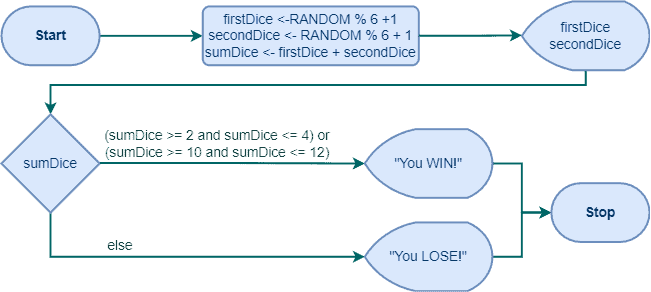
这个流程图清晰地展示了从掷骰子到判断胜负的整个流程。
5. 系统性总结
下面是对流程图主要元素的总结:
| 元素名称 | 简要说明 | 图形符号 | 对应伪代码结构 |
|---|---|---|---|
| Terminator | 起始/结束标识 | 椭圆 | 函数或程序边界 |
| Manual Input | 用户手动输入 | 四边形 | 输入操作(input, scanf) |
| Process | 数据处理操作 | 矩形 | 赋值、算术运算 |
| Display | 输出操作 | 菱形 | 输出语句(print) |
| Decision | 条件判断 | 菱形 | if-else, switch-case |
| Predefined Process | 调用已定义好的函数/子程序 | 双矩形 | 函数调用 |
| Connector | 连接流程图不同部分 | 圆形 | 流程合并点 |
| Line | 表示执行流程 | 箭头线 | 伪代码执行顺序 |
6. 总结
流程图是一种非常有效的算法设计工具,尤其适合需要可视化逻辑流程的场景。通过 ISO 5807 标准,我们可以确保流程图的图形元素统一、逻辑清晰。
无论是使用伪代码还是流程图,关键在于:
✅ 在编码前进行逻辑设计,有助于减少错误
✅ 提高代码可读性与可维护性
✅ 方便团队协作与文档编写
流程图虽然不依赖具体编程语言,但能与伪代码、真实代码一一对应,是软件开发中不可或缺的设计工具。